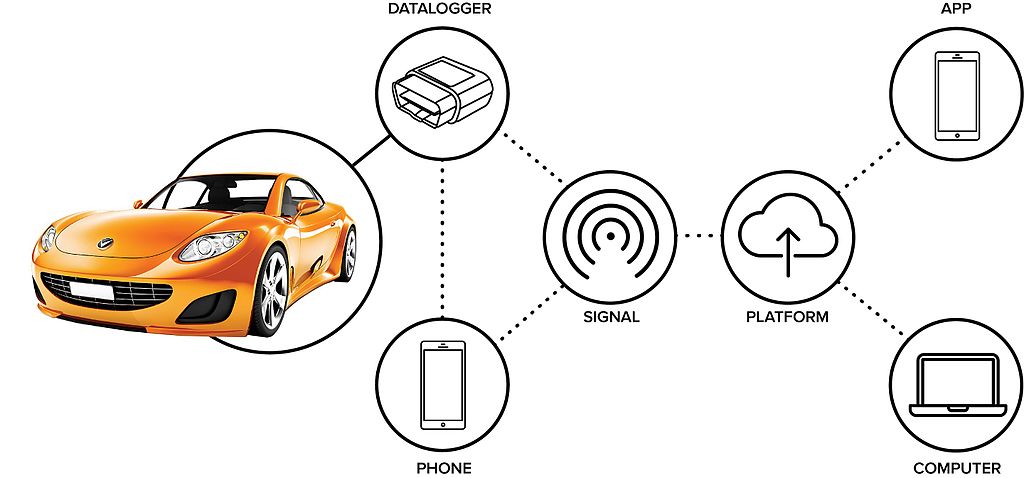Benefits Of Predictive Maintenance

Introduction
Predictive maintenance (PdM) is a sophisticated approach to equipment management that utilizes data-driven techniques to anticipate and address potential failures before they occur. In automotive engineering, where vehicle reliability, performance, and safety are paramount, predictive maintenance offers significant advantages over traditional maintenance strategies. This detailed study explores the technical benefits of predictive maintenance, emphasizing its application in the automotive industry and its implications for engineering practices and vehicle management.
1. Technical Foundations of Predictive Maintenance
1.1 Definition and Concepts
Predictive maintenance involves using advanced analytics, machine learning algorithms, and real-time data to predict when a vehicle component or system is likely to fail. This approach contrasts with traditional maintenance strategies, such as reactive maintenance (performing repairs only after a failure occurs) and preventive maintenance (scheduled maintenance based on time intervals or usage).
1.2 Key Technologies and Tools
-
Sensors and Data Acquisition:
- Types: Various sensors, such as temperature sensors, vibration sensors, and pressure sensors, are used to monitor the condition of vehicle components.
- Data Collection: Continuous data collection provides real-time insights into component performance and potential issues.
-
Data Analytics and Machine Learning:
- Algorithms: Predictive maintenance leverages statistical models and machine learning algorithms to analyze historical and real-time data.
- Predictive Models: These models forecast potential failures by identifying patterns and anomalies in the data.
-
Condition Monitoring Systems:
- Integrated Systems: Condition monitoring systems integrate sensors, data analytics, and user interfaces to provide actionable insights and alerts.
- Dashboard Interfaces: User interfaces display real-time data, predictive insights, and maintenance recommendations to technicians and fleet managers.
2. Benefits of Predictive Maintenance
2.1 Enhanced Reliability and Safety
-
Early Detection of Issues:
- Predictive Indicators: By analyzing data patterns, predictive maintenance can identify signs of potential failures well before they become critical.
- Case Studies: For instance, monitoring vibration data can reveal wear in rotating components like wheel bearings, allowing for timely intervention.
-
Reduced Risk of Unexpected Failures:
- Minimized Downtime: Anticipating component failures reduces the likelihood of sudden breakdowns, enhancing vehicle reliability and safety.
- Safety Enhancements: Early detection helps prevent accidents caused by component failures, improving overall safety.
2.2 Cost Savings and Operational Efficiency
-
Reduced Maintenance Costs:
- Optimized Intervals: Maintenance activities are performed based on the actual condition of components, reducing unnecessary interventions.
- Example: Instead of performing routine oil changes every 5,000 miles, predictive maintenance can determine the optimal interval based on engine performance and operating conditions.
-
Minimized Downtime and Productivity Loss:
- Scheduled Repairs: By addressing issues before they lead to failures, predictive maintenance minimizes unplanned downtime, ensuring vehicles are operational when needed.
- Fleet Management: Fleet operators can schedule maintenance activities during off-peak times, optimizing vehicle availability and reducing disruption.
-
Extended Equipment Lifespan:
- Targeted Maintenance: Addressing issues before they cause significant damage extends the lifespan of components and reduces the frequency of replacements.
- Lifecycle Management: Predictive maintenance supports better lifecycle management by optimizing maintenance schedules and minimizing wear.
2.3 Improved Maintenance Planning and Resource Allocation
-
Data-Driven Decisions:
- Prioritization: Predictive maintenance allows for prioritizing maintenance tasks based on the severity of potential issues and their impact on vehicle performance.
- Resource Optimization: Maintenance resources, such as labor and parts, are allocated more efficiently based on predictive insights.
-
Enhanced Planning and Scheduling:
- Maintenance Windows: Scheduled maintenance activities can be planned around predicted failure windows, reducing operational disruptions and optimizing technician schedules.
- Inventory Management: Better forecasting of parts and supplies reduces inventory costs and ensures that necessary components are available when needed.
2.4 Enhanced Customer Experience
-
Increased Vehicle Availability:
- Reduced Breakdowns: Predictive maintenance helps prevent breakdowns, leading to higher vehicle availability and improved customer satisfaction.
- Reliability: Reliable vehicles enhance the overall customer experience, whether for personal use or fleet operations.
-
Proactive Customer Communication:
- Alerts and Notifications: Customers and fleet managers receive notifications about upcoming maintenance needs, allowing them to plan and address issues proactively.
- Service Recommendations: Predictive maintenance systems can provide tailored service recommendations based on individual vehicle performance data.
3. Implementation Challenges and Considerations
3.1 Data Integration and Management
-
System Integration:
- Challenges: Integrating predictive maintenance systems with existing vehicle diagnostics and fleet management systems can be complex.
- Solutions: Implementing standardized data protocols and ensuring compatibility between different systems can address integration challenges.
-
Data Quality and Accuracy:
- Importance: The effectiveness of predictive maintenance relies on the quality and accuracy of the data collected.
- Data Validation: Regular calibration of sensors and validation of data sources are essential for maintaining data integrity.
3.2 Cost of Implementation
-
Initial Investment:
- Technology Costs: Implementing predictive maintenance systems involves costs related to sensors, data analytics software, and training.
- Return on Investment: While initial costs can be significant, the long-term benefits in terms of cost savings and efficiency often outweigh the investment.
-
Scalability:
- Fleet Size Considerations: Scaling predictive maintenance systems for large fleets requires careful planning and resource allocation.
- Modular Solutions: Modular and scalable solutions can help manage costs and adapt the system to different fleet sizes and requirements.